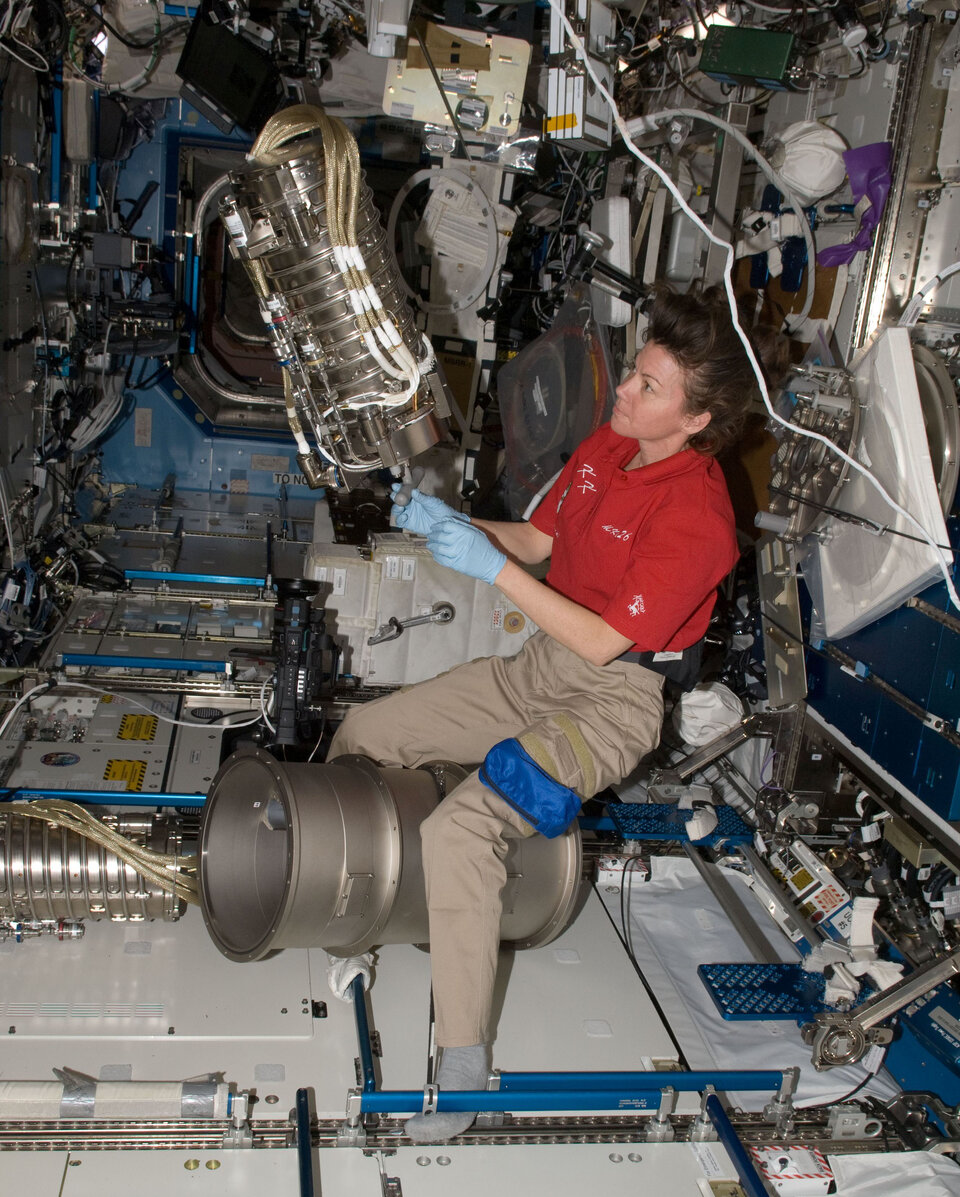Cooling aluminium alloy research
The CETSOL-2 series of experiments uses ESA’s Materials Science Laboratory on the International Space Station. Nothing less than a miniature metal furnace in space, the Materials Science Laboratory can heat samples to 1400°C before letting the metals solidify. Astronauts collect data for the MICAST ( Microstructure Formationin Casting of Technical Alloys) experiment by installing cartridges with metal alloys.

CETSOL-2 (Columnar to Equiaxed Transition in Solidification Processing) focuses on how cooling aluminium alloys in specific areas and adding microparticles can improve the result.
Aluminium is used in many products, from car engines to industrial machines but casting strong forms is heavily influenced by temperature differences during the cooling process. In a single block of cast aluminium, the strength, elasticity and resistance can differ because the aluminium does not cool uniformly.
This problem has been known for years but an effective computer model to use as a basis for improving the process has been missing.
In addition to looking at temperature, CETSOL-2 observes how adding microparticles can help. Like adding raisins to a cake-mix, adding small particles to a metal can improve the result. Called ‘grain refiners’ by metallurgists, these grains improve the metals properties but CETSOL-2 will help to understand how.















 Germany
Germany
 Austria
Austria
 Belgium
Belgium
 Denmark
Denmark
 Spain
Spain
 Estonia
Estonia
 Finland
Finland
 France
France
 Greece
Greece
 Hungary
Hungary
 Ireland
Ireland
 Italy
Italy
 Luxembourg
Luxembourg
 Norway
Norway
 The Netherlands
The Netherlands
 Poland
Poland
 Portugal
Portugal
 Czechia
Czechia
 Romania
Romania
 United Kingdom
United Kingdom
 Slovenia
Slovenia
 Sweden
Sweden
 Switzerland
Switzerland


























